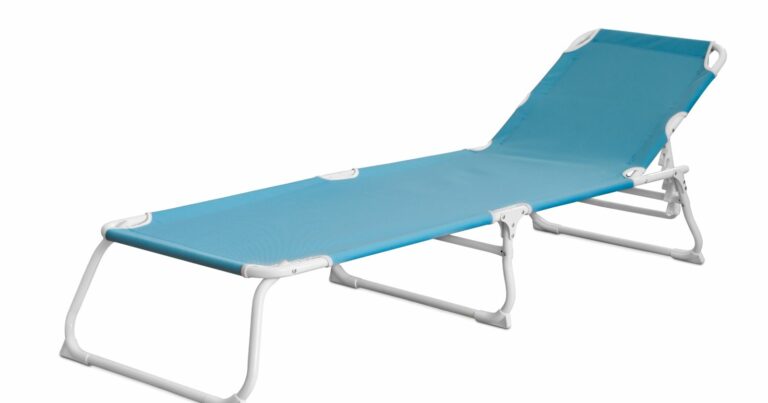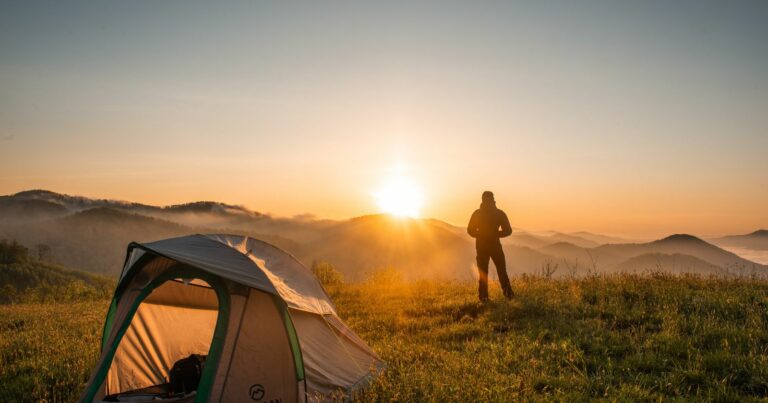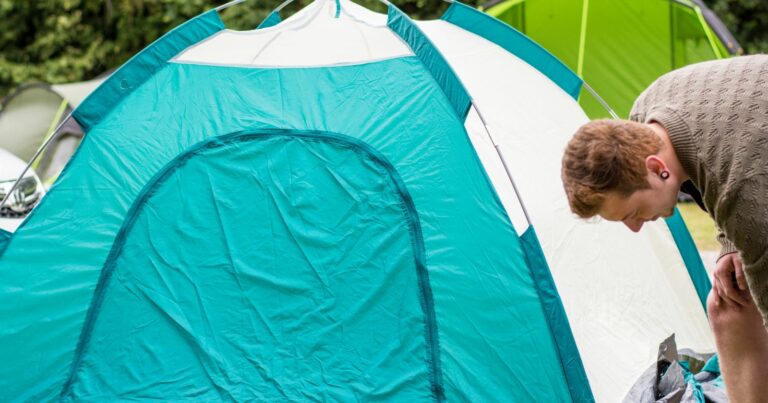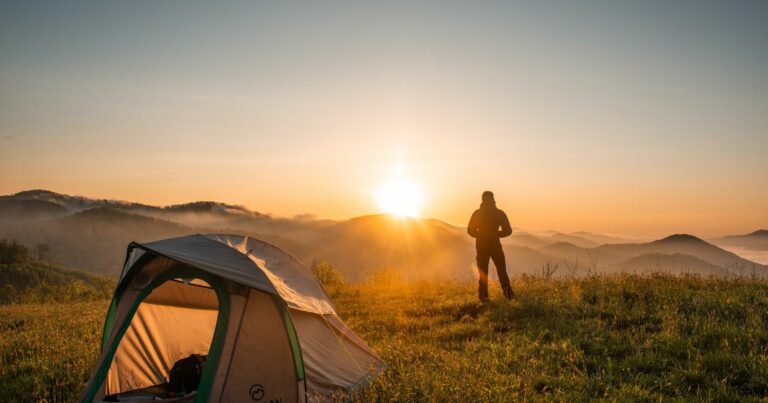Enjoy Free Camping Right Outside the National Parks
With soaring popularity, camping in America’s treasured national parks increasingly requires booking precious permits months in advance. But don’t stash your tent just yet! While camping inside national park boundaries may not be free, you still have ample options to pitch your tent under the stars near these icons free of charge.
Vast tracts of surrounding public lands offer prime free camping with easy park access. Forest service, BLM and state land all provide off-the-grid sites if you know where to look. With strategic planning, you can enjoy day hiking in the parks and retreat to a scenic free campsite just outside the borders at night.
Grab your hiking boots, reliably rugged vehicle and sense of adventure. Nearby public lands hold hidden gems awaiting your discovery. Let’s dig into how to tap into free camping right on the doorstep of the most popular national parks. Revel in sweeping views, nightly campfires and family bonding without draining your wallet.
Camping Inside National Parks Comes at a Premium
Most national parks now require backcountry camping permits, and demand far exceeds supply. Securing a coveted permit takes entering a competitive lottery months in advance. And you’ll still pay a permit fee ranging from $10-$50 per night. Developed campgrounds inside park boundaries run $20-$30 per night or more in peak season.
While camping within the parks provides immersion in breathtaking landscapes, free options exist just beyond the borders.
Find Free Campsites Near the Parks’ Entrances
One strategy is locating free campsites as close to park entrances as possible. This allows quick early morning entry to start your day and minimal travel time returning at night.
Options may include:
- National forest land surrounding the parks
- BLM land parcels bordering park edges
- Free camping on state land adjacent to the parks
- Boondocking sites off forest access roads leading to the parks
Arrive early to secure a coveted spot with easy next-day access into the parks.
Public Lands Offer Secluded Campsites Near Parks
Greater distances from the parks mean less competition for free camping sites with expanded public land options.
National Forests
National forests contain thousands of free dispersed camping sites, although not right next to the parks. Camping is limited to 14 days. Highlights near national parks:
- Shoshone National Forest by Yellowstone
- Bridger-Teton National Forest outside Grand Teton
- Inyo National Forest bordering Yosemite’s east side
- Tongass National Forest next to Glacier Bay National Park
BLM Land
BLM oversees millions of acres of free camping land across the West. Notables include:
- BLM land around Arches and Canyonlands National Parks
- Huge sections near Grand Canyon National Park’s North Rim
- BLM parcels bordering California’s Joshua Tree National Park
With more driving, you trade convenience for free camping immersed in nature away from crowds.
Boondocking Opens Up Free Options
Boondocking refers to free dispersed camping on public land. It unlocks plentiful camping opportunities near national parks.
- Pull off forest service roads in national forests
- Follow rough dirt roads to remote BLM land
- Locate little-used turnouts along state highways
- Ask locals for undisclosed boondocking locations
Arrive prepared for self-sufficient camping without hookups or amenities. The payoff is camping under the stars in stellar settings.
Know Where Free Camping is Prohibited
When exploring free camping options near national parks, avoid any prohibited areas:
- Developed campgrounds within the parks
- Private land outside the parks
- City, county and state parks in the vicinity
- Parking lots, trailheads, picnic areas
- Schools, airports, military bases
Always verify regulations to ensure you are in a sanctioned free camping zone. The right public lands offer stunning settings right at the national parks’ doorsteps.
Planning Your Free Campsite Stay Near National Parks
With America’s cherished national parks increasingly crowded, smart planning is key to finding great free camping options just outside their borders. Follow these tips to pick the perfect site, prepare gear, and make the most of your national park adventures.
Choose a National Park Region
America’s national park system spans diverse terrain from coast to coast. Determine which region best fits your interests:
Rocky Mountains – Glacier, Yellowstone, Grand Teton, Rocky Mountain NP
Southwest – Grand Canyon, Arches, Zion, Bryce Canyon, Mesa Verde NP
West Coast – Yosemite, Sequoia, Redwood, Olympic NP
East Coast – Acadia, Shenandoah, Great Smoky Mountains NP
Selecting a region narrows the scope for finding surrounding free camping. Time visits to cooler spring/fall months for popular parks.
Locate Adjacent Public Lands
Once you’ve selected a park area, research bordering public lands allowing free camping:
- National forest land near the park
- BLM parcels adjacent to park boundaries
- State land next to or surrounding the park
Use maps and land agency websites to pinpoint promising areas. Discover free camping gems hiding in plain sight.
Strategize Park vs. Campsite Time
Decide your ideal mix of days in the park sightseeing vs. time relaxing at your campsite. More distant sites allow immersing in nature but require more drive time accessing the parks.
Plan multiple nights at one basecamp for day trips if you prefer less relocating. Or scout a new free site nightly for variety.
Pack Smart with Essentials
Effectively provisioning your free campsite allows you to comfortably enjoy rustic nights and active park days:
- Food, water, shelter, first aid, sanitation supplies
- Tools for self-sufficient site maintenance and repairs
- Navigation, communication devices to stay safe
- Park maps, hiking gear, picnicking supplies
Pack multi-use items to save space. You’ll relish evenings around the campfire beneath starry skies.
Finding Your Camping Bliss Near the Parks
The national parks top bucket lists for their incredible scenery. Luckily, you can easily access their wonders while still finding free camping bliss right outside their borders. Consider these tips and tricks to enhance your adventures.
Claim Coveted Sites at Dawn
Competition can be stiff for free campsites near popular parks as other savvy travelers have the same idea. Set your alarm early to break camp and arrive at promising new areas at first light to claim that idyllic riverside spot.
Check-in time for campgrounds is often 2 p.m. Arrive by 11 a.m. to swoop in as soon as departing campers vacate primo sites.
Chat with Park Rangers
Stop by the ranger station to talk with knowledgeable park staff. Ask about better-kept-secret free camping areas nearby that don’t show up on maps or websites. Local insights can lead you to hidden gem sites.
Keep the Noise Down
With scarce campsites near crowded parks, privacy is limited. Avoid loud music, rambunctious games and barking dogs to maintain positive relations with your closest neighbors. Wave hello but respect others’ space.
Follow All Regulations
Using free public lands comes with the duty to follow posted rules and regulations. Avoid overstaying time limits, leaving trash, or any illegal behavior. Pitch in picking up litter to leave the area better than you found it.
We all share responsibility for preserving access to these incredible public spaces surrounding treasured national parks. Follow common courtesy and minimum impact practices.
Vehicle and Road Prep for Boondocking Near Parks
Boondocking off the beaten path requires extra vehicle prep and diligence on rough remote roads. Avoid breakdowns miles from help with:
High Clearance
Higher clearance helps navigate rutted access roads into free camping zones off the parks’ beaten paths.
All-Terrain Tires
Knobby, durable tires provide traction on mud, gravel and uneven surfaces you’ll encounter.
Skid Plates
Beefy skid plates protect vital components like oil pans and differentials from bashing rocks.
Emergency kits
Pack tools, spare parts, traction aids, first aid supplies for self-rescue and repairs. Know how to safely use them.
Communication Devices
Bring a satellite communicator, signal mirror or beacon to call for help if injured or stranded.
Navigation Tools
GPS, maps and a compass are essential if going far off grid. Download maps offline ahead of time.
High Clearance
The further you venture from parks, the more rugged conditions become. Make safety and self-reliance your priorities.
Free Camping Etiquette Near National Parks
Free camping near iconic parks comes with responsibility. Follow common courtesy and minimum impact guidelines:
Arrive Early
Early birds get the worm and the best sites. Avoid “site squatting” by showing up right at checkout time to snag newly vacant spots.
Leave No Trace
Pack out all trash and debris. Bury human waste away from water sources. Follow principles of minimum impact camping.
No Generators Near Tents
Be considerate with noise. Generators plague otherwise serene settings. Place away from other campers.
Respect Privacy
Avoid intruding on others’ space. Wave hello but allow privacy. Keep voices and music volumes down.
Obey Posted Limits
Abide by stay limits, typically 14 days max. Overstaying strains the land and is illegal. Move to a new area.
Teach Kids Outdoor Ethics
Gently instill values like tidying up trash that isn’t yours and respecting nature. Lead by example.
We all share awesome public lands. Thoughtful actions preserve these treasures for future generations.
Frequently Asked Questions About Free Camping Near National Parks
Are campfires allowed on free public lands near parks?
Generally yes, but always check local fire restrictions. Use established fire rings when available or mound soil to contain fires. Extinguish completely when done.
Can I boondock for free right next to a national park entrance?
Usually not, as regulations prohibit camping in parking lots, trailheads, picnic areas, etc. near parks. But free options often exist close nearby on public lands.
Do I need a camping permit to stay on BLM land near a park?
Rarely. The majority of BLM land allows free camping without a permit. Just follow rules like moving locations after 14 day max stays.
Is it safe for a woman camping alone near parks?
Generally, yes, but take standard safety precautions. Camp where other groups are visible, keep your site tidy, and be aware of surroundings.
How do I find free camping sites near a park online?
Check tools like FreeCampsites.net, Campendium app, and public lands maps to locate promising BLM, national forest and state land nearby parks.
Conclusion
America’s national parks are world-class destinations but increasingly competitive for camping reservations. Yet you can still find fabulous free camping right on their doorstep by tapping into surrounding national forests, BLM and state land.
With strategic planning, you can explore the parks’ wonders by day and retire to a secluded public lands campsite at night. Learn how to comfortably camp off-the-grid with minimum impact.
Revel in the parks’ glories, then escape to your own majestic vista. Let this guide open up a lifetime of free camping adventures that nourish the soul. Our awe-inspiring public lands are yours to treasure, if you know where to look!







